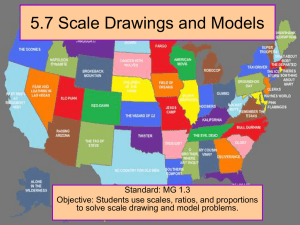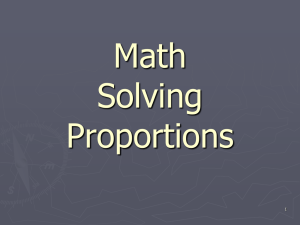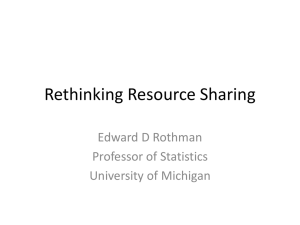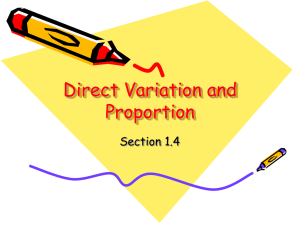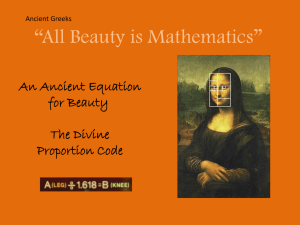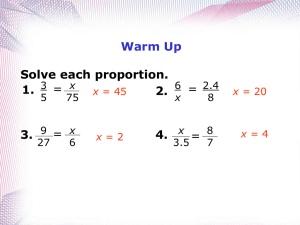Section 7.3 - Saluda County School District 1
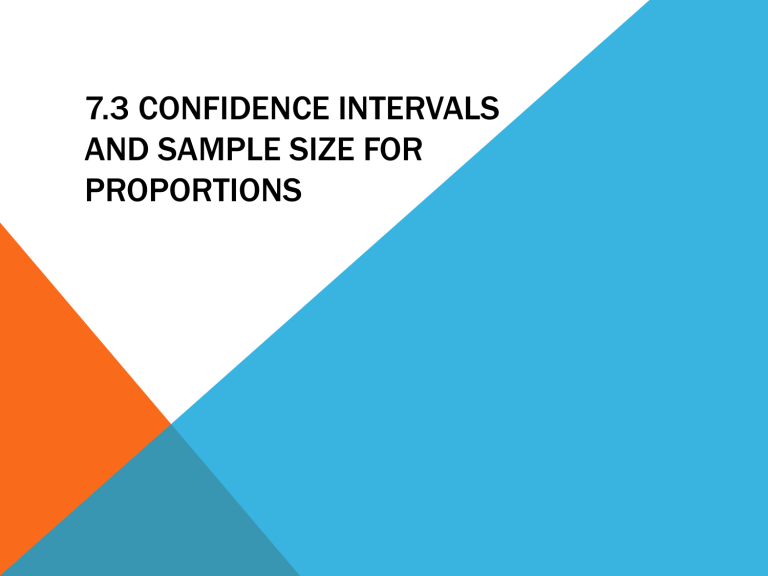
7.3 CONFIDENCE INTERVALS
AND SAMPLE SIZE FOR
PROPORTIONS
PROPORTION NOTATION
p
= population proportion
(read p “hat”) = sample proportion
For a sample proportion,
X and
n
n
X or
n
X
= number of sample units that possess the characteristics of interest n
= sample size.
In a recent survey of 150 households, 54 had p , where is the proportion of households that have central air conditioning.
X
= 54 and n
= 150
X
n
54
150
1 p
0.36
36%
1 0.36
0.64
64%
CONFIDENCE INTERVAL FOR A PROPORTION
ˆ
z
2 n p p z
2 n when np
5 and nq
5.
Rounding Rule: Round off to three decimal places.
A survey conducted by Sallie Mae and Gallup of 1404 respondents found that 323 students paid for their education by student loans.
Find the 90% confidence of the true proportion of students who paid for their education by student loans.
Since
α
= 1 – 0.90 = 0.10,
z
α /2
= 1.65.
A survey of 1721 people found that 15.9% of individuals purchase religious books at a Christian bookstore.
Find the 95% confidence interval of the true proportion of people who purchase their religious books at a Christian bookstore.
0.159
0.841
1721
0.142
0.176
0.159
0.841
1721
Practice p. 382 1-6, 8, 11
SAMPLE SIZE NEEDED FOR PROPORTIONS n
pq
z
E
2
2
If necessary, round up to the next whole number .
A researcher wishes to estimate, with 95% confidence, the proportion of people who own a home computer. A previous study shows that 40% of those interviewed had a computer at home. The researcher wishes to be accurate within 2% of the true proportion. Find the minimum sample size necessary.
n
ˆ ˆ
z
E
2
2
0.40
0.60
1.96
0.02
2
2304.96
A researcher wishes to estimate the percentage of M&M’s that are brown. He wants to be 95% confident and be accurate within 3% of the true proportion. How large a sample size would be necessary?
Since no prior knowledge of is known, assign
ˆ
Substitute in the formula, using E = 0.03.
PRACTICE p. 383 15 - 20



